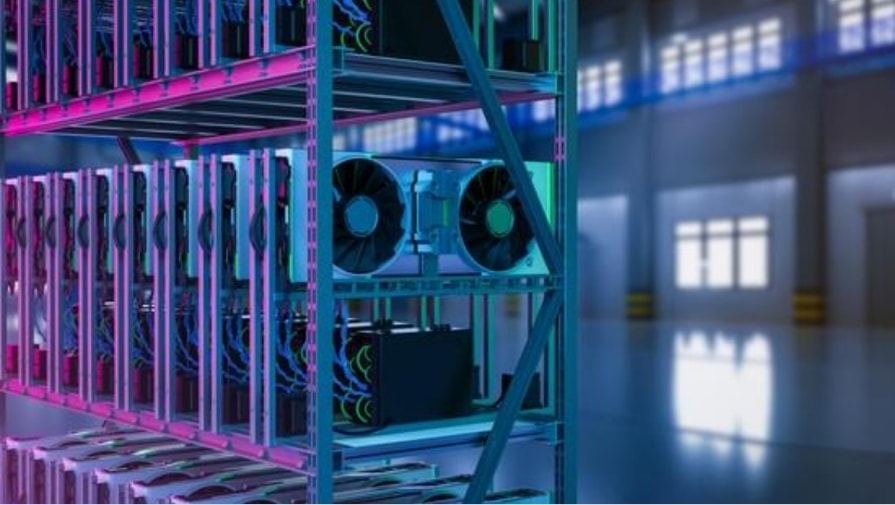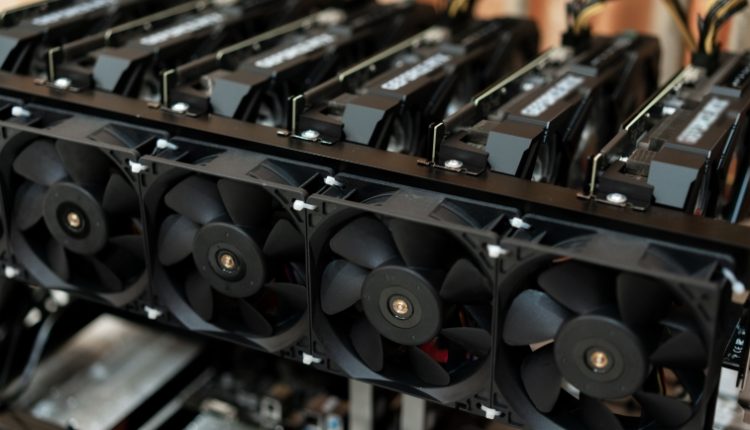How to Mine Cryptocurrency: A Quick Start Guide for Beginners

Cryptocurrency mining has emerged as a lucrative and intriguing venture for individuals seeking to delve into the world of digital currencies. However, the intricacies of the mining process can be overwhelming for beginners.
This guide aims to provide step-by-step instructions to help beginners navigate the world of crypto mining with confidence and ease.
On this page:
- Understanding Cryptocurrencies and Blockchain Technology
- Choosing the Right Cryptocurrency to Mine
- Setting Up Your Mining Hardware
- Installing and Configuring Mining Software
- Joining a Mining Pool
- Monitoring and Optimizing Your Mining Operation
- Managing and Securing Your Crypto Assets
- Exploring Advanced Mining Strategies
Understanding Cryptocurrencies and Blockchain Technology
Cryptocurrencies and blockchain technology are intricately linked, with cryptocurrencies serving as digital assets that utilize blockchain technology for secure and decentralized transactions, ensuring transparency and immutability of the recorded data.
Cryptocurrencies, such as Bitcoin and Ethereum, have gained significant popularity in recent years, attracting a large community of enthusiasts and investors. These digital currencies operate on a decentralized network of computers, known as a blockchain, which acts as a distributed ledger that records all transactions.
The blockchain technology ensures that each transaction is verified and added to the chain in a transparent and secure manner, eliminating the need for a centralized authority, such as a bank, to oversee the transactions.
This decentralized nature of cryptocurrencies and blockchain technology provides individuals with greater control over their assets and financial transactions, enabling them to bypass traditional intermediaries and reduce transaction costs.
Moreover, blockchain technology offers several advantages over traditional systems. One of the key features of blockchain is its immutability, which means that once a transaction is recorded on the blockchain, it cannot be altered or tampered with. This ensures the integrity and transparency of the data, making it highly secure and resistant to hacking or fraud.
Additionally, blockchain technology enables peer-to-peer transactions without the need for intermediaries, eliminating the risk of censorship or manipulation by a central authority.
This decentralized nature of blockchain technology also promotes inclusivity and financial empowerment, as it allows individuals from all over the world to participate in the global economy without the need for a traditional banking system.
Overall, understanding cryptocurrencies and blockchain technology is crucial for beginners in the field of crypto mining, as it lays the foundation for secure and transparent transactions that form the basis of this emerging industry.
RELATED: Cryptocurrency 101: Understanding the basics of Digital Currency
Choosing the Right Cryptocurrency to Mine
When considering which digital currency to focus on, one must carefully evaluate different options based on their market value, potential profitability, and technological advancements.
The cryptocurrency market is highly volatile, with prices fluctuating rapidly. It is important to choose a cryptocurrency that has a stable market value and shows potential for long-term growth.
Additionally, the profitability of mining a particular cryptocurrency should be analyzed. Factors such as the mining difficulty, block reward, and transaction fees can significantly impact the profitability of mining.
Technological advancements in a cryptocurrency also play a crucial role in its selection. Newer cryptocurrencies often have more advanced technology, which can result in faster and more efficient mining processes.
In the world of cryptocurrency mining, belonging to a specific community is essential. Each cryptocurrency has its own community of supporters and miners who contribute to its development and growth.
Being part of a community not only provides a sense of belonging but also offers valuable insights and support from experienced miners.
It is important to choose a cryptocurrency that aligns with one’s values and interests. By joining a community that shares similar goals and beliefs, miners can collaborate and exchange knowledge, ultimately increasing their chances of success.
Furthermore, being part of a community can also provide opportunities for networking and staying up-to-date with the latest trends and developments in the cryptocurrency industry.
RELATED: The most popular types of Cryptocurrencies
Setting Up Your Mining Hardware

To establish a successful mining operation, one must first ensure the proper configuration and setup of their hardware.
This step is crucial as it directly impacts the efficiency and profitability of the mining process.
Firstly, it is important to choose the right hardware for mining, considering factors such as hash rate, power consumption, and cost.
High hash rate ensures faster mining, while keeping power consumption in check reduces operational costs.
Additionally, one should consider the mining algorithm used by the chosen cryptocurrency, as different algorithms require different types of hardware for optimal performance.
Once the hardware is selected, the next step is to set it up properly.
This involves assembling the hardware components, such as graphics cards, mining rigs, or specialized mining hardware, according to the manufacturer’s instructions.
It is crucial to ensure that all connections are secure and stable to avoid any potential hardware failures or performance issues.
Additionally, proper cooling is essential to prevent overheating and extend the lifespan of the hardware.
Adequate ventilation and cooling systems should be set up to maintain optimal operating temperatures.
Finally, installing the necessary mining software and configuring it correctly is essential to start mining.
This involves creating a mining account, selecting the mining pool (a group of miners who combine their computing power to increase their chances of mining a block), and entering the required mining parameters.
Popular Mining Rigs
Here are five popular mining rigs that were well-known up to 2021:
- Bitmain Antminer S19 Pro: Bitmain is a major player in the crypto mining industry, and the Antminer S19 Pro is one of their flagship models. It uses the SHA-256 algorithm and has a hash rate of around 110 TH/s, making it suitable for mining Bitcoin.
- MicroBT Whatsminer M30S: The Whatsminer M30s was developed by MicroBT and is known for its high efficiency and performance. It also uses the SHA-256 algorithm and has a hash rate of approximately 86 TH/s.
- Bitmain Antminer L3+: If you’re interested in mining Litecoin or other Scrypt-based cryptocurrencies, the Antminer L3+ is a popular choice. It offers a hash rate of around 504 MH/s.
- Innosilicon A10 Pro: This miner is designed for mining Ethereum and other Ethash-based coins. It was known for its competitive hash rate and efficiency. The A10 Pro had a hash rate of about 500 MH/s.
- StrongU STU-U6: The StrongU STU-U6 is another miner for cryptocurrencies that use the SHA-256 algorithm. It had a hash rate of around 660 TH/s, placing it among the high-performance options.
Remember that the effectiveness of a mining rig also depends on factors like electricity costs, network difficulty, and the price of the cryptocurrency being mined.
Installing and Configuring Mining Software

In order to initiate the mining process, the installation and configuration of mining software is a crucial step that must be carefully executed. Mining software is designed to connect your mining hardware to the blockchain network and enable the processing of transactions. There are various mining software options available, each with its own unique features and compatibility with different operating systems.
It is important to choose a reliable and reputable mining software that suits your specific needs. Once you have selected the mining software, the next step is to install and configure it on your mining rig. The installation process typically involves downloading the software from the official website and following the provided instructions.
After the installation is complete, you will need to configure the software by entering your mining pool information, such as the pool URL and your mining credentials. This information allows your mining software to connect to the mining pool and start participating in the mining process.
Installing and configuring mining software is an essential step in the crypto mining journey. It enables your mining hardware to communicate with the blockchain network and start processing transactions. By carefully selecting and setting up the mining software, you can optimize your mining operations and increase your chances of earning rewards.
Which Mining Software to Choose?
Mining software depends on what cryptocurrency you intend to mine and the hardware you’re using. Mining software is designed to work with specific algorithms and hardware setups.
Here are some popular mining software options for different cryptocurrencies:
| Cryptocurrency | Mining Software |
| Bitcoin (SHA-256 Algorithm): | CGMiner
BFGMiner BitMinter |
| Ethereum and Ethereum-based coins (Ethash Algorithm):
|
PhoenixMiner
Gminer T-Rex Miner |
| Litecoin (Scrypt Algorithm):
|
CGMiner
EasyMiner Awesome Miner |
| Monero (RandomX Algorithm):
|
XMRig
XMR-Stak |
| Zcash (Equihash Algorithm):
|
EWBF Miner
Bminer |
| Ravencoin (X16R Algorithm):
|
T-Rex Miner
Enemy Miner KawPowMiner |
Remember that the mining landscape can change rapidly due to updates in algorithms, hardware, and software. It’s important to do your own research and keep up with the latest information to ensure you’re using the most efficient and up-to-date software for your specific setup.
Always make sure to download mining software from trusted sources to avoid potential security risks. Also, keep in mind that with the increasing complexity of mining and the growing dominance of specialized hardware, mining at home might not be as profitable as it once was.
Joining a Mining Pool
Joining a mining pool allows miners to combine their computing power and resources, creating a collaborative effort to increase the chances of successfully mining new blocks and receiving rewards.
In the world of cryptocurrency mining, where the competition is fierce, joining a mining pool can be a beneficial strategy for beginners. By pooling their resources, miners can collectively solve complex mathematical problems required for mining new blocks, which in turn increases their chances of receiving rewards.
This collaborative approach not only enhances the efficiency of mining operations but also provides a sense of belonging and camaraderie among the participants.
When miners join a mining pool, they contribute their computing power to the pool’s collective effort. The pool then distributes the mining rewards among its members based on their individual contributions.
Joining a mining pool not only allows beginners to tap into the combined computing power of experienced miners but also provides them with a supportive community that can help answer questions and provide guidance along the way.
This sense of belonging and collaboration can be particularly valuable for beginners who may feel overwhelmed by the complexities of crypto mining.
By joining a mining pool, beginners can feel a sense of unity and shared purpose, which can motivate them to continue their mining efforts and increase their chances of success in the competitive world of cryptocurrency mining.
Leading Mining Pools
The popularity and ranking of cryptocurrency mining pools can change rapidly due to various factors, such as the shifting dynamics of the cryptocurrency market, changes in mining algorithms, and pool performance.
Here are five well-known mining pools that are currently popular:
- F2Pool: F2Pool (also known as Discus Fish) is one of the oldest and largest mining pools. It supports a wide range of cryptocurrencies and has a significant share of the global hash rate.
- Poolin: Poolin is a multi-cryptocurrency mining pool that offers mining services for several popular coins. It is known for its transparency and user-friendly interface.
- Antpool: Operated by Bitmain, one of the largest cryptocurrency mining hardware manufacturers, Antpool is one of the largest mining pools globally. It supports several major cryptocurrencies.
- BTC.com: Another mining pool operated by Bitmain, BTC.com offers mining services for Bitcoin and Bitcoin Cash. It has been a significant player in the Bitcoin mining scene.
- Slush Pool: Slush Pool is one of the oldest mining pools, having been established in 2010. It was the first mining pool for Bitcoin and is known for its stability and reliability.
Remember that the popularity and performance of mining pools can change over time, so it’s a good idea to do your research and check for up-to-date information before choosing a mining pool to join.
Monitoring and Optimizing Your Mining Operation
Monitoring and optimizing a mining operation involves continuously assessing and improving the efficiency and performance of the mining equipment and processes. By closely monitoring the mining operation, miners can identify any issues or bottlenecks that may be hindering the overall performance.
This can include monitoring the temperature and power consumption of the mining equipment, as well as tracking the hashrate and profitability of the mining operation.
By regularly analyzing this data, miners can make informed decisions on how to optimize their mining operation.
Optimizing a mining operation requires a systematic approach to ensure maximum efficiency and profitability. Miners can experiment with different mining software, mining configurations, and hardware setups to find the best combination that yields the highest hashrate and lowest operating costs.
Additionally, miners can also optimize their mining operation by managing their electricity usage and reducing any unnecessary expenses. Continuous monitoring and optimization not only ensure a higher return on investment for miners but also contribute to the overall sustainability of the crypto mining industry.
By striving for the most efficient mining operation, miners can minimize their environmental impact and contribute to the long-term viability of cryptocurrency mining.
Managing and Securing Your Crypto Assets
Managing and securing crypto assets involves implementing robust security measures to protect against potential threats and ensuring proper storage and backup of digital wallets.
As the value of cryptocurrencies continues to rise, individuals and organizations must take proactive steps to safeguard their assets. Here are four key considerations for managing and securing crypto assets:
- Use strong and unique passwords: Creating strong passwords is crucial to preventing unauthorized access to your crypto assets. It is recommended to use a combination of uppercase and lowercase letters, numbers, and special characters. Additionally, using a password manager can help generate and securely store complex passwords for multiple accounts.
- Enable two-factor authentication (2FA): Two-factor authentication provides an extra layer of security by requiring users to provide an additional piece of information, such as a unique code sent to their mobile device, in addition to their password. Enabling 2FA adds an extra barrier to protect against unauthorized access to your crypto assets.
- Consider using hardware wallets: Hardware wallets are physical devices designed to securely store cryptocurrency private keys offline. They offer a higher level of security compared to software wallets as they are not susceptible to malware or hacking attempts. Hardware wallets provide a reliable and convenient way to protect your crypto assets from potential online threats.
- Regularly update software and firmware: Keeping your software and firmware up to date is essential for maintaining the security of your crypto assets. Updates often include bug fixes and security patches that address vulnerabilities. Neglecting to update your software and firmware could expose your crypto assets to potential risks.
By following these measures, individuals and organizations can enhance the security of their crypto assets and protect against potential threats. Taking proactive steps to manage and secure crypto assets is essential in the rapidly evolving world of cryptocurrencies, ensuring peace of mind and a sense of belonging to a community of responsible crypto asset owners.
RELATED: What is a Digital Currency Wallet and How does it work?
Exploring Advanced Mining Strategies
To optimize the efficiency and profitability of mining operations, it is essential to explore advanced strategies that can maximize hash rate and minimize energy consumption. One such strategy is pool mining, where multiple miners contribute their computational power to mine cryptocurrencies collectively.
This approach not only increases the chances of successfully mining a block but also provides a more stable income stream for individual miners.
By joining a mining pool, miners can benefit from shared resources, lower variance in rewards, and a reduced risk of downtime. Additionally, pool mining allows beginners to learn from experienced miners and gain insights into the best practices and techniques for maximizing mining efficiency.
Another advanced mining strategy is to consider the choice of mining hardware. As technology advances, newer and more efficient mining hardware models are introduced to the market.
These hardware options, such as application-specific integrated circuits (ASICs), offer significantly higher hash rates and lower energy consumption compared to traditional CPU or GPU mining.
Investing in the right mining hardware can greatly enhance the mining operation’s profitability by providing a competitive advantage in terms of computational power and energy efficiency.
However, it is crucial to thoroughly research and consider the cost-effectiveness of the hardware, taking into account factors such as upfront costs, electricity prices, and the cryptocurrency being mined.
By carefully selecting and regularly upgrading mining hardware, beginners can stay competitive in the ever-evolving world of crypto mining and maximize their potential returns.
Conclusion
Mining cryptocurrencies can be a lucrative and rewarding endeavor, but it requires careful planning and execution. Understanding the fundamentals of cryptocurrencies and blockchain technology is essential in choosing the right cryptocurrency to mine.
Additionally, setting up the mining hardware and installing the appropriate mining software is crucial for a successful mining operation.
Joining a mining pool can increase the chances of earning rewards, while monitoring and optimizing the mining operation can help maximize profits. It is also important to manage and secure crypto assets, as the digital nature of cryptocurrencies makes them vulnerable to hacking and theft.
Exploring advanced mining strategies can further enhance mining efficiency and profitability.
Overall, mining cryptocurrencies can be a complex and challenging process, but with the right knowledge and resources, beginners can navigate through the steps and potentially reap the benefits of this emerging industry.

